Hello and welcome!
On Wednesday, the National Catholic Register published an op-ed I co-authored with Cardinal Dolan and Archbishop Gomez, presenting the case for federal government support of schools being extended to Catholic school parents, in order to help prevent closure of Catholic schools throughout the country due to the parents’ inability to afford tuition because of job losses and related economic impacts of the COVID public health crisis. I want to share it with you.
Catholic Schools Are Worth Saving
By Cardinal Timothy M. Dolan, Cardinal Seán P. O’Malley and Archbishop José H. Gómez
Late last month, the U.S. Supreme Court corrected an historic injustice, rooted in anti-immigrant and anti-Catholic bigotry, that, for more than 100 years, has denied students in religious schools the same opportunities as government-school students.
The landmark ruling in Espinoza v. Montana Department of Revenue will greatly expand school-choice options, especially for low-income and minority families. It could not have come at a more crucial moment.
With Congress now back in session to consider next steps to sustain Americans through the COVID-19 pandemic, helping tuition-paying families keep their Catholic and other non-government schools open this fall must be part of the larger, urgently needed plan to sustain our nation. Doing so is right for parents, children and their devoted teachers who depend on these schools.
The COVID-19 pandemic has affected every American. In addition to mourning the tragic loss of tens of thousands of our loved ones and fellow citizens, the country is also encountering the painful effects of racism and discrimination. As we consider the changes our country needs to make, access to quality education should be a prominent item on the list. All Americans, regardless of race or income, need a path to true human flourishing.
For nearly two centuries, Catholic schools have provided an enormous public benefit by educating a diversity of Americans from every walk of life, including from every income level, but especially the poor and immigrant communities. For countless Americans, a Catholic education is the surest path out of poverty.
Catholic schools also educate significant numbers of students who are not Catholic, including children from Protestant, Jewish and Muslim families and from homes where no religion is claimed. These parents, like Catholic parents, want a great education for their children.
Catholic schools are presently facing their greatest financial crisis as a result of the coronavirus. Because of economic loss and uncertainty, many families are confronting the wrenching decision to pull their children out of Catholic schools. Already, the National Catholic Education Association estimates close to 100 Catholic schools will close. Declining reenrollment trends portend hundreds more school closures are likely — if these schools are not provided federal support in the next coronavirus-relief bill.
Catholic schools are worth saving not only for the proven results in serving children from low-income, working-class and middle-income families, but because of the impact our schools have on American society as a whole.
Our schools’ mission is to serve, and our success is documented. Catholic schools do a better job of educating students, at half the cost of government schools, and provide healthy competition in education. Year after year, 99% of our students graduate from high school, and 86% go on to four-year colleges.
Catholic-school closures would have more than a ripple effect for taxpayers. For every student educated in a Catholic school, taxpayers save thousands of dollars by not having to educate them in government schools. Per-pupil costs of public schools are about $12,000 a year. With nearly 2 million Catholic-school students, that means Catholic schools are saving the nation’s taxpayers more than $20 billion each year. The financial danger to already cash-strapped school-district budgets is that hundreds of closures will increase overcrowding in government schools at the worst possible time, as the Centers for Disease Control urges schools to provide greater space for children.
Our leaders in Washington can avoid this twofold education crisis by investing in families as part of any new coronavirus-relief bill, to enable them to sustain their desired Catholic education for their children. This is not a choice between tax-payer-funded public schools and tuition-based independent schools. Public schools and independent schools equally deserve and urgently need our government’s assistance.
The most effective and immediate way to accomplish this is to fund scholarship assistance this summer to families who are economically disadvantaged and need such support. The scholarships would be used at Catholic or other non-government elementary or secondary schools. This approach would be similar to providing Pell grants that can be used at any institution of higher education, including religious institutions.
To enable families to provide the best education for their children and stabilize enrollment in Catholic and other non-government schools, Congress should also adopt a federal scholarship tax credit modeled after successful state-level credits. This is the kind of program that the Supreme Court upheld in the Espinoza case. COVID-19 is impacting all Americans, and we are in this struggle together. We therefore should ensure these tax credits are available to every eligible child in every state. No state should be permitted to deny their resident students access to scholarship opportunities resulting from federal tax policy.
Students and families for generations have benefited from Catholic schools, which have benefited America as a whole. This is now in serious jeopardy, as another sad legacy of the coronavirus pandemic.
Urgent action by President Donald Trump and Congress to meet the needs of Catholic and other school families will preserve this important education option for generations to come and prevent added financial burdens on our government school systems.
Cardinal Timothy M. Dolan is the archbishop of New York;
Cardinal Seán P. O’Malley is the archbishop of Boston;
Archbishop José H. Gómez is the archbishop of Los Angeles and president of the U.S. Conference of Catholic Bishops.
Last Wednesday, I had a Zoom meeting of the bishops who were involved in the V Encuentro of Hispanic/ Latino Ministry. Our meeting was chaired by Bishop Arturo Cepeda of Detroit.
The V Encuentro process was more than just a one-time gathering but was really a four-year process taking place between 2016-2020. From 2016-2018 we had local and regional gatherings to plan and prepare. 
Then we had the gathering in Texas, held more or less in the middle, in 2018. And finally, from 2019-2020 was the period to bring back experiences of the Encuentro gathering and continue to implement them and evaluate them on the local level. Obviously, the pandemic caused great disruptions in everyone’s plans, and this meeting was to discuss plans to continue the Encuentro process despite the current challenges.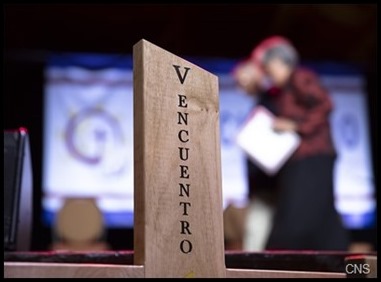
There will be a Virtual National Encuentro on Oct. 9-10. As part of this, every diocese will be invited to send twice the number of participants that attended the 2018 V Encuentro gathering in Texas.
During the meeting, we gave a report on what is being done here in our region, and we are also planning to hold a local virtual pilgrimage of our own.
Last Thursday, we had our last Presbyteral Council meeting of the summer. Like all such meetings these days, it was held via Zoom. While we miss our in-person gatherings, it certainly does make it easier for the council members to participate – we always have a very good turnout!
This meeting was an opportunity for the priests to share some of the hopeful signs and challenges that we are seeing now that people are returning to Mass in the parishes. Of course, most places are still offering Mass online, so that those who are still fearful about gathering can feel connected to the parish and part of the community.
We also had a meeting of the Archdiocesan College of Consultors in conjunction with the Presbyteral Council.
Also, on Thursday, we had the board meeting of the Guild of St. Luke for Catholic physicians. With us for the meeting was Guild president Dr. John Barravecchio, vice-president Dr. David Ramsey and secretary Dr. Sylvia Ooi, along with board members Dr. Lucy Bayer-Zwirello and Dr. Richard Florentine. Also with us was Guild chaplain Msgr. Timothy Moran of St. Joseph Parish, Medway.
Among the items we discussed was the celebration of the annual White Mass, which we hold each October around the Feast of St. Luke. This year, we plan to hold the White Mass in the Cathedral rather than at St. John’s Seminary, where it has been in recent years. We also spoke about recruitment efforts that will hopefully attract new members to this very important organization.
Last Friday I attended the visitation for Ryan Lahiff, an outstanding young man called to the Lord early in life. Ryan was a graduate of Catholic Memorial High School where, among many other activities, he was a member of the school’s football team, and he was continuing his education at Sacred Heart University in Connecticut. 
Ryan was very involved at his parish, St. Mary’s in Dedham, was active in youth ministry there and was well known for his kindness to all people. As we prayed with Ryan’s parents Paul and Kristyn, his brother Timothy and other family members, we gave thanks for the gift of Ryan’s life, entrusted him to eternal life with the Lord and asked his prayers for the consolation of all who knew and loved him. May he rest in peace.
On Monday, I also went to Quincy to attend the wake of James Clary, the dad of Father Brian Clary, pastor of St. Ann and St. Brendan Parishes in Dorchester.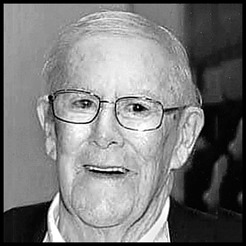
It was an opportunity to express my condolences to the family, to be together with them and pray with them.
I was recently sent a couple of nostalgic photos that I want to share with you.
The first is from Father Bob Casey, who came across this newspaper clipping at St. Brigid’s.
It shows Richard Cardinal Cushing smoking with a friend outside of the South Boston drugstore where he worked as a young man.
The other comes from a book sent to me by Msgr. Michael Kosak, who was one of my priests in the Virgin Islands.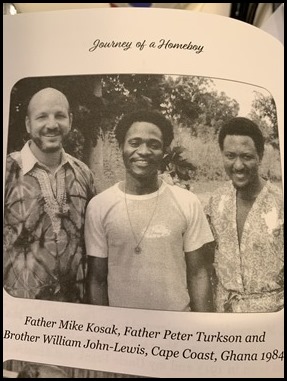
In the center is then-Father Peter Turkson, who would come to help us out in the islands during the summers when he was studying in Rome. Of course, he is now a cardinal and the Prefect for the Dicastery for Promoting Integral Human Development.
But even back then, we were all very impressed with his zeal. Even though he was only asked to fill in for some of our priests by celebrating a few Masses and hearing confessions, he would always do so much more, such as giving Scripture classes for the deacons and visiting the sick. He was very, very generous with his time and in his service to the people. He always worked very hard in many different pastoral activities and, because of that, the people had a great love and affection for him. So, when he was named a bishop back in Ghana, the people were all very delighted. Of course, he went on to be Archbishop of Cape Coast and then Pope Benedict named him to the Roman Curia.
Also, I was so pleased that recently St. Tarcisius Parish in Framingham announced the establishment of a Portuguese language web radio station, www.ScalabriniRadio.net, as a service to the local Brazilian immigrant community.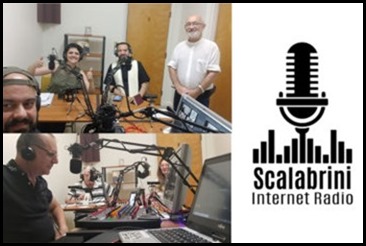
We are very grateful to the pastor of St. Tarcisius, Father Volmar Scaravelli, and the Scalabrinian community for working with the parish to making this initiative possible. It is a great benefit to our Brazilian community here in the archdiocese. I was very happy to record a greeting for them to use during their broadcasts, and we wish them great success.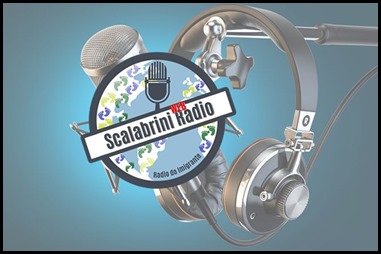
Until next week,
Cardinal Seán
